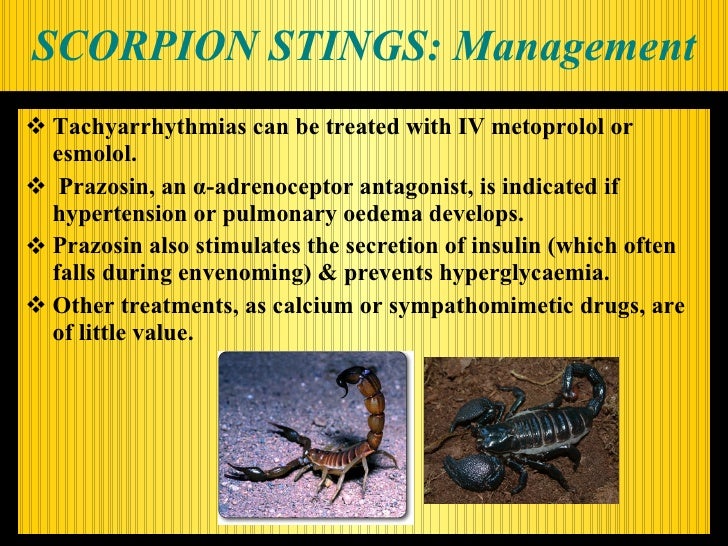
Scorpions are arachnids belonging to the family Scorpionidae. They are commonly known as "death-stingers." They are found all over the world, both on land and underwater. Scorpions can be recognized by their bright red abdomen, their segmented body, and their venomous stinger. They can live up to thirty years.
Scorpions usually are not aggressive and generally are harmless and non-aggressive. However, they can cause an intense nuisance by causing a rash on humans that is similar to that of a bee sting. However, if the scorpion is killed, there will be no swelling, irritation or itching. Scorpions can be poisonous to dogs and cats. However, since these creatures cannot jump, they are generally not poisonous to birds. The poison that these creatures use is called histamines, and it is caused by the nervous system being stimulated.
The scorpion’s stinger contains toxins and a neurotoxin, a toxin that attacks the nerves and brain. It causes a sensation of pain and makes swallowing difficult. This is the scorpion’s major source of food, but there are other things it may eat as well.
Because the stinger is very short and sharp, it is not difficult for a scorpion to inject its venom into a person’s skin. Although the stinger does not contain a neurotoxin, a few scorpions may inject poison into the victim’s skin while the stinger is still attached.
The sting itself is painful but not dangerous. A person’s skin is numbed to the sensation and a localized burn is often noticed. The stinger’s sharp point can also irritate the eyes.
People who are stung should immediately wash their hands and stay away from the sting until it has healed; if the wound does not heal, the venom may affect the human’s eyes, respiratory system, and stomach. For people with asthma, this is even more dangerous.
The venom causes a burning sensation and usually damages the human skin. People suffering from the symptoms of a scorpion sting may have difficulty breathing, loss of consciousness and fainting, irregular pulse, difficulty breathing, abdominal pain, nausea, vomiting, and diarrhea. If left untreated, the sting of a scorpion can lead to death.

It is important to get help quickly if someone you know has been stung, because the action of the poison is life-threatening. To avoid being stung, never come into contact with scorpions. Wear gloves when working outdoors, especially near plants, and wash your hands before touching other people’s skin.
Do not attempt to remove the stinger yourself unless you have had the stinger removed first. The sting sting is highly toxic and you may be allergic. Therefore, you should immediately seek medical help.
Removing the sting of a scorpion is not particularly difficult. If you’re confident that you can handle removing the scorpion’s stinger yourself, the first thing you should do is remove the entire stinger with tweezers or a pair of tweezers and cut off the tip of the stinger, then wrap it in a towel.
To get the scorpion sting rod, pull the ribbon around the stinger. It may be slightly twisted so that it cannot be pulled out easily. Then apply pressure along the shaft.
Try not to pull too hard as this can damage the skin. After this is done, you just need to repeat the procedure to remove any remaining stinger. If it doesn’t hurt, you can soak it in alcohol and put ice on it to help the bite heal faster.
If the sting is so badly damaged that you can’t even get it out of your skin, try using alcohol-based creams, ointments, or lotions, which you can choose from Artikel dan Produk Kesehatan. They can numb the bite and make it easier for the skin to heal. If the sting has caused a problem, you can also cut it off by soaking it in alcohol-based creams. and put it in a plastic bag and then store it in the refrigerator to kill the stinger and its venom.